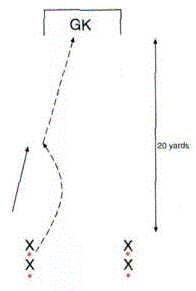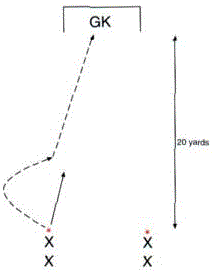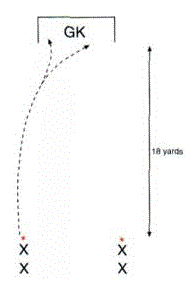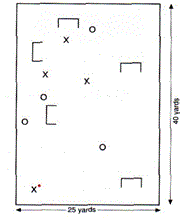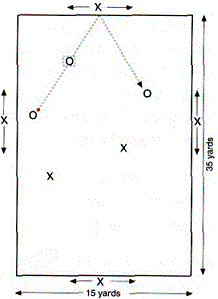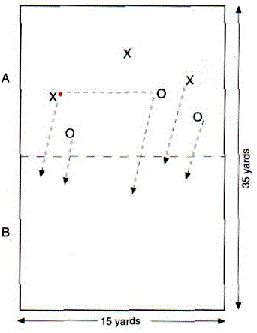Rehan Mirza (UEFA B License Coach at Notts County FC Centre of Excellence, England)
After much attention recently towards the U16’s for Pakistan, I thought it would be sensible to post some sessions suitable for a more younger age group.
I myself coach an U14’s side which represent the Schools football association for the Nottinghamshire region of the UK. These players are at their most vulnerable physically and mentally as you may find some may change direction due to lack of interest or varied growth spurts.
However, it is always important to keep them stimulated and interested to learn.
At this age, 14 years old should have good technical ability and skill level. However, their reading of the game may still be in question. You will find that they may still hunt the ball down in any part of the pitch. Should these players use the whole pitch? One thing I have realized is that these players will only make the pitch as big as they need to. This is natural as they are still learning the game.
The following sessions were designed by Erich Rutemoller, who attended The Football Association’s Football Academy Seminar at Walton Hall, Warwickshire, UK. He conducted a practical coaching session on shooting and smallsided games for young and youth age players using boys from the Centre of Excellence at Coventry City FC.
Erich is very highly regarded in the German Football Federation (DFB) and was formerly a staff coach at the German Coaching School in Cologne.
After a brief introduction and warm-up, the following practices were conducted:
Shooting
Practice 1
1. The players start from 30 yards from the goal. 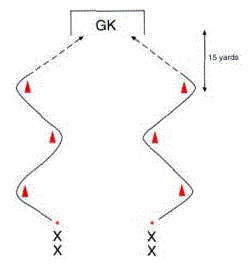
2. Players should dribble in and out of three
cones placed five yards apart, as shown
opposite, and on passing the final cone,
shoot at goal from a distance of 15-18
yards.
3. Players work both sides, using left and right
feet to shoot.
1. Players stand, back to goal, a ball at their
feet approximately 25 yards from goal.
2. Players should back-heel the ball, turn and
shoot from 20 yards.
1. Players should stand 20 yards from the goal
as shown opposite.
2. Players should ‘toe-lift’ the ball into the air,
approximately five yards ahead of them.
3. Player runs forward to volley the ball past
the goalkeeper.
4. Work both sides to use left and right foot
volleys.
1. Players start 18 yards from the goal.
2. On the coach’s command, the players
should dribble the ball towards the goal
and beat the goalkeeper in a 1-v-1 situation
– either dribble around or shoot past the
goalkeeper.
Small-sided Games
1. A game of 4-v-4 in an area of 40 yards by
25 yards.
2. Five goals are set up at random within a
playing area – using cones.
3. Play 4-v-4 and a player must dribble the
ball through a goal to score a point for his
team.
4. Once through the goal, the team in possession must attack one of the other goals – players cannot score twice in the same goal.
2. Four players (X) play for the team in
possession of the ball. They cannot enter
the playing area but can move along the
outside lines of the pitch.
3. Three players attempt to retain possession
of the ball against two defenders. Should
the defenders gain possession of the ball,
they attempt to retain possession using the
outside players.
4. Number of touches:
(i) unlimited
(ii) maximum two touch.
1. An area of 35 yards by 15 yards.
2. Two teams play 3-v-3.
3. One team (X) in possession attempt to
keep possession in their own half of the
pitch – area A.
4. If the other team (O) intercepts or gains
possession of the ball, they move the ball
(run with the ball or pass to a runner) into
their own half of the pitch – area B – and
attempt to keep the ball in their area
against the three X s who follow and press them.
1. An area of 35 yards by 15 yards.
2. 3-v-3 inside the area and one player for
each team on the end line of the playing
area.
3. The team in possession retains possession
of the ball until they can pass to ‘their’
target player behind the end line.
4. On passing to the end player, X enters the
playing area in possession of the ball and is replaced by the player who passed to him.


